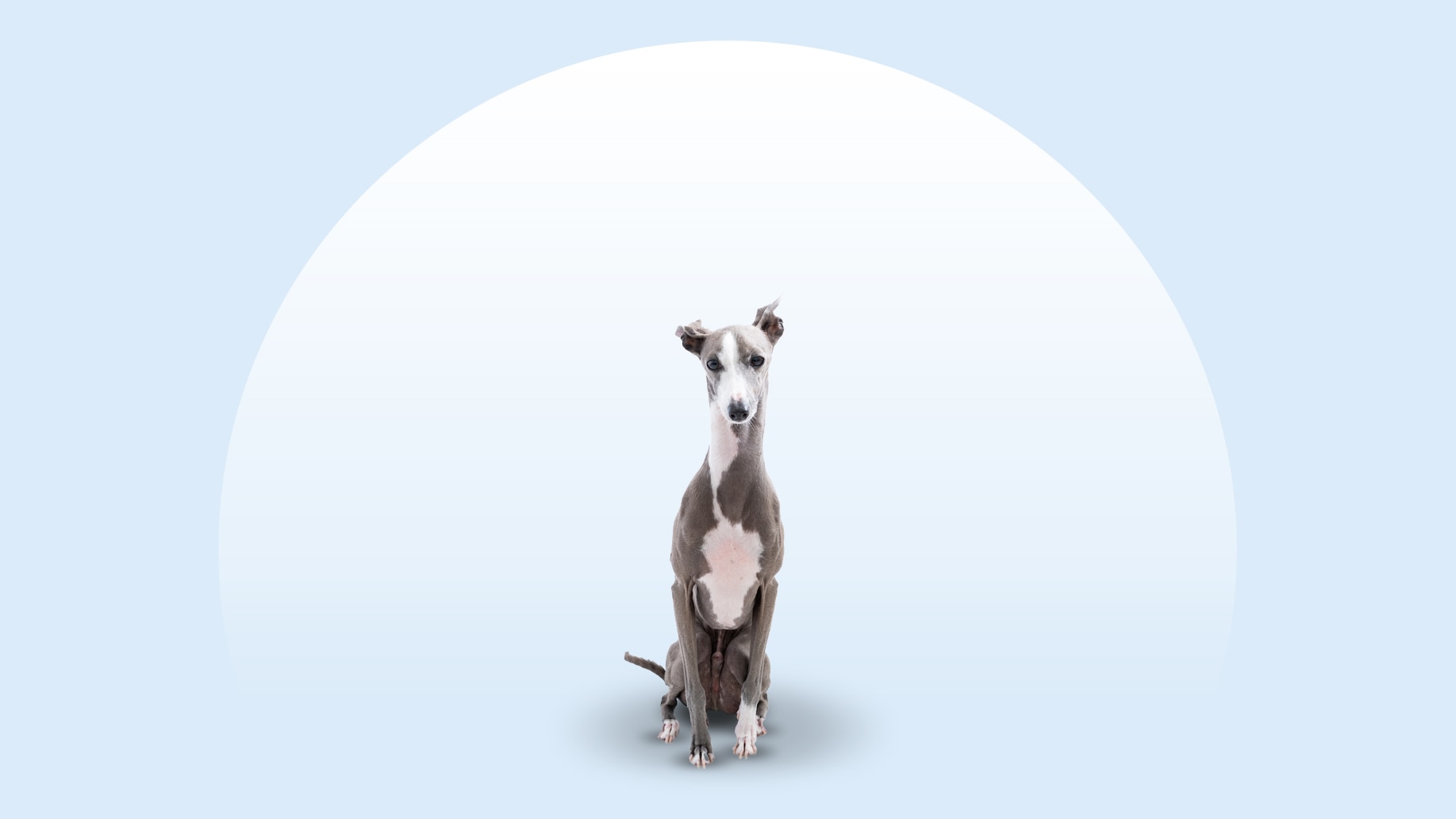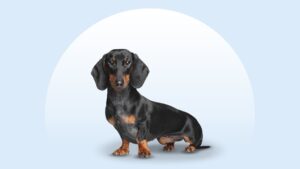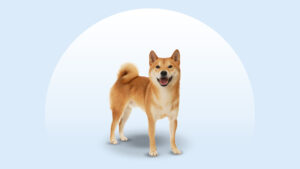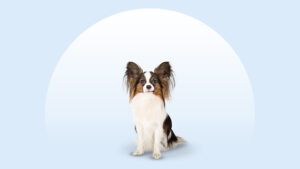Italian Greyhound
Updated September 2, 2025
Italian Greyhound
Updated September 2, 2025
Italian Greyhounds are tiny pups who might seem serious at first—but within a few minutes, you’ll realize they’re fun-loving and big-hearted. Quick and agile, they have vibrant personalities and love to be doted on and snuggled with.
Alert, Dainty, Sweet
7–14 pounds
13–15 inches
14–15 years
Grey, Sable, Red, Black, Cream, Blue
Say ciao to the newest love of your life: the Italian Greyhound. This is a dainty little nugget of a dog with an aristocratic air, but there’s nothing stuck-up about the Italian Greyhound’s personality. They’re thrilled to cozy up in your lap at the end of the day (they’d prefer to sleep in your bed too, if that’s OK), and they’re rife with affection for their favorite person (you!).
These quick little runners have a spirited personality that’s a big mood booster. Return the favor by making them the happiest pup ever with lots of attention and affection.
Italian Greyhound Characteristics
Italian Greyhound Appearance
Italian Greyhounds have slender, stoic features, and they carry themselves with grace. But their inquisitive eyes convey fun and excitement.
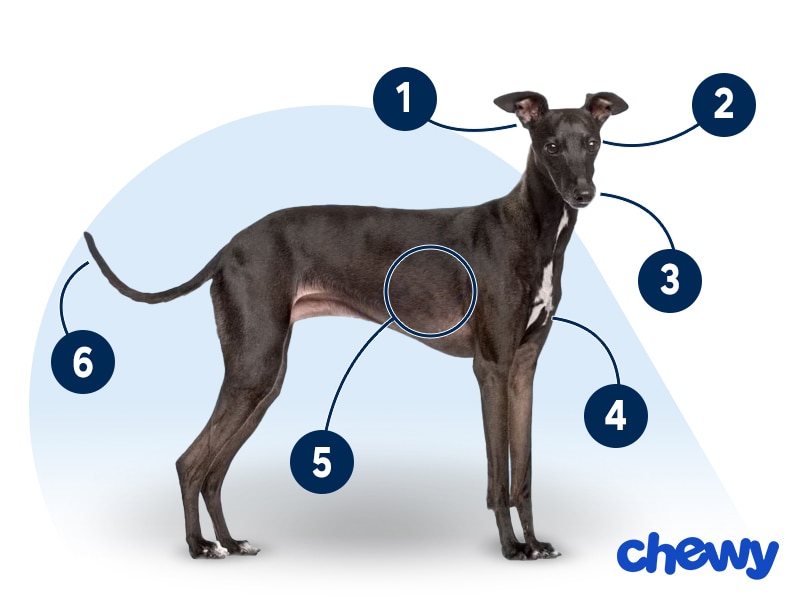
- Ears
Italian Greyhounds’ ears are small and thin. They’re usually thrown back and folded. If alerted to something, their ears will fold forward at right angles.
- Eyes
Their medium-sized eyes are dark yet bright and inquisitive.
- Nose
An Italian Greyhound’s nose is dark, usually black or brown. Their snout is long and relatively narrow.
- Coat Length
Italian Greyhounds have short, fine hair that’s glossy and soft to the touch.
- Coat Color
Italian Greyhound colors include gray, sable, red, black, cream, and blue.
- Tail
The Italian Greyhound’s tail is slender, tapered, and carried low.
Italian Greyhound Temperament
The Italian Greyhound is the perfect blend of sporty and sweet. Depending on your individual pup, they might get excited to chase after a squirrel or prefer to spend the afternoon snoozing in the sun.
At heart, these affectionate, gentle pups are happier snuggling on your lap than anything else. And they love a good zoomie to show you how thrilled they really are with life.
Clever with a mischievous streak—they might think it’s a fun game to steal your socks—Italian Greyhounds are a delightful addition to any home, as long as it’s a cozy environment and other pets aren’t too overwhelming for their tiny frames.
Italian Greyhounds might be a little aloof with friends and guests, but they’ll warm up over time and win them over with their playful personality. They really do bring joy to everyone they meet.
How to Care for a Italian Greyhound
Italian Greyhounds are high energy, but their tiny size makes meeting their exercise goals easy. Their grooming needs are also not extensive, though you will spend more time on their dental care.
Grooming
Training
Diet
Exercise
Environment
Italian Greyhound Health
The typical Italian Greyhound lifespan is 14–15 years. They tend to be more fragile than other dogs their size, so treat them gently and make sure they play gently with other dogs.
Here are some common health issues to be aware of.
- Autoimmune disorders: Italian Greyhounds are prone to autoimmune disorders, which occur when the dog’s immune system mistakenly targets its own proteins and cells. Symptoms run the gamut—from skin lesions and bumps to limping and difficulty swallowing—depending on the particular disorder. It’s best to report anything unusual to your vet right away. These disorders are often treated with immunosuppressive therapy, including steroids.
- Broken bones: Italian Greyhounds are dainty, so use caution when they’re around larger dogs and encourage them to avoid jumping or any movements that could cause a fracture to their delicate bones.
- Epilepsy: Italian Greyhounds are prone to seizures caused by epilepsy. It’s treated with medication.
- Hypothyroidism: Hypothyroidism includes symptoms like lethargy, hair loss, ear and skin infections, and weight gain. A blood test can diagnosis it, and treatment is a daily oral medication.
- Legg-Calve-Perthes disease: A rare and likely genetic disease that causes bone death in the head of the femur and significant changes to the hip joint, Legg-Calve-Perthes usually develops in a pup’s first year of life, causing pain and limping. Almost all cases require surgery, but most Italian Greyhounds make a full recovery.
- Luxating patella: Italian Greyhounds can develop a luxating patella, where the kneecap slips out of place. It may be treated with supplements and meds, if mild, though surgery may be necessary.
- Progressive retinal atrophy (PRA): PRA leads to blindness in dogs. While there is no cure, pups who lose their eyesight tend to adapt well and can still live full, happy lives.
Italian Greyhound History
OK, the secret is out: The Italian Greyhound isn’t exactly from Italy. The origin of the Italian Greyhound begins 2,000 years ago in a region ruled by the Roman Empire, now Greece and Turkey.
During the Italian Renaissance, Italian Greyhounds became a popular breed among aristocrats, nobility, and the wealthy; they were frequently included in portraits from that period.
Queen Victoria, James I, Frederick the Great, Catherine the Great, and Anne of Denmark were all fans of this tiny but mighty breed. In fact, an African king reportedly traded 200 cattle for one Italian Greyhound.
In 1886, the American Kennel Club (AKC) recognized the breed. Italian Greyhound puppies tend to cost between $1,400–$2,000. If you choose this route, pick a responsible breeder.
You can also adopt an Italian Greyhound who’s been patiently waiting for a forever home. Find Italian Greyhounds for adoption via a local rescue, like the Midwest Italian Greyhound Rescue; keep an eye out at your local shelter; or search Chewy’s database of adoptable dogs in your area.
